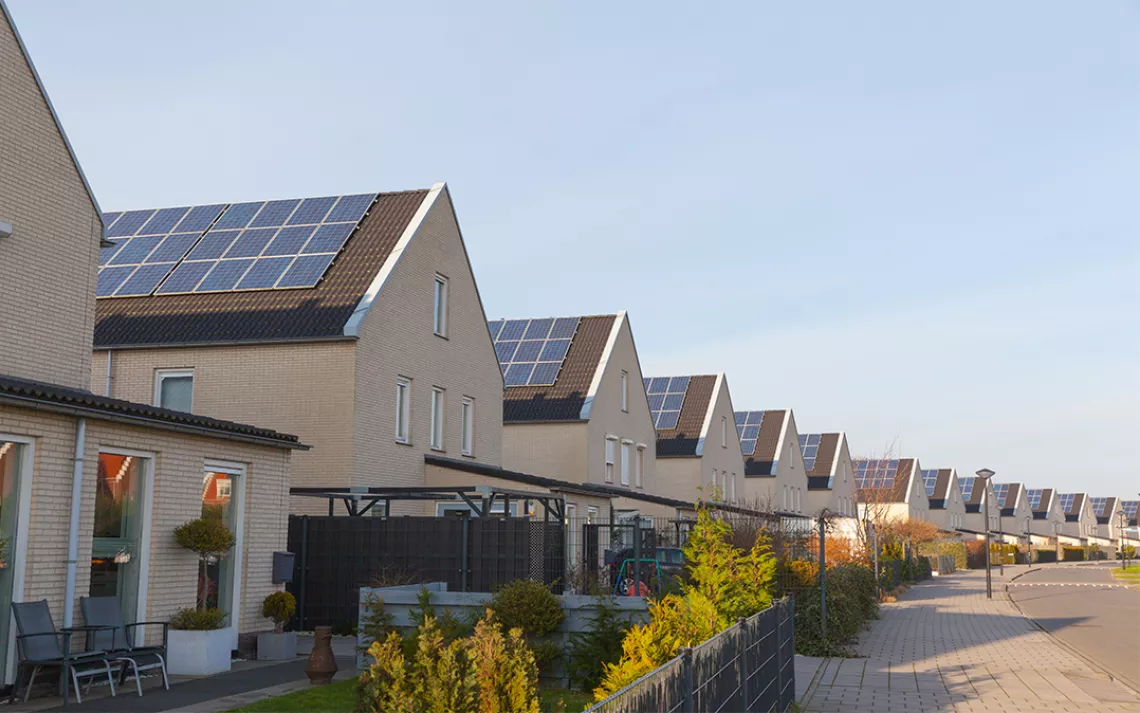Think Your Household Is Sustainable? Think Again.
New studies look at the interconnectivity of food production, energy, and water usage

Photo by ebobeldijk/iStock
You turn off the lights. You buy local food. You’ve switched to a low-flow showerhead. You’re running a sustainable household . . . aren’t you? Actually, it’s not that simple.
Direct household energy use—that is, the energy you use to operate your boiler and stove, or to light your rooms, for example—accounts for 38 percent of total usage in the United States. However, when indirect usage is factored in—to account for what’s used elsewhere to produce your food and get water to your household—that number jumps to an astonishing 80 percent. In part to address this, the National Science Foundation (NSF) is funding 17 projects to study the interconnectivity of food production, energy, and water usage, both inside and outside U.S. households—and how all the various systems work together. “No one was really looking at this intersection,” says James Jones, director of the NSF program that awarded the grants. Jones hopes the studies will eventually help consumers better understand the effects of their actions and how they are linked to the broader picture of sustainability.
Think of it this way: You buy a lovely local lettuce. But you live in arid Arizona, where farming uses huge amounts of the scant water supply, plus energy to distribute it. NSF grant recipients are looking at solutions to situations like these that incorporate government, industry, and agriculture, in addition to the affected households. The results of those studies, which in some cases hope to uncover tech-based sustainability options aimed at a wide spectrum of users—farmers, water and waste managers, energy producers, educators, as well as individual consumers—won’t be released for about five years. But in the meantime, primary investigators on three of the ongoing NSF studies had plenty of tips to offer for how individuals can start making a dent in the food-energy-water waste nexus.
Part of it, says Chelsea Schelly of Michigan Tech, lies in a better understanding of the implications of your choices. For example, switching off lights is fine, but changing all your bulbs to LED saves a lot more energy. For the most significant impact, do both!
Are you already composting food waste? That’s great, says Callie Babbitt of the Rochester Institute of Technology (RIT) in upstate New York. However, the average American household tosses 25 percent of purchased food before it’s consumed. Which means that if you bought less food to begin with, and researched how to store it so as to prolong its life, according to Babbitt, you’d squander a lot less of the energy and water required to produce and ship it to your local food suppliers. Add a Community Sponsored Agriculture (CSA) group to your shopping routine, and you up the savings ante further by simplifying the food supply chain and ensuring that you’re accessing the “ugly” but still-delicious produce that supermarkets typically discard.
British Columbia native Lilian Alessa at the University of Idaho knows the joys of eating wild-caught fish. While she wants nothing more than to believe it’s sustainable, she says we can no longer rely on ocean stocks to feed us, insisting they’re depleted: “It’s critical that we rethink globally how we treat our oceans.” She points out that American aquaculture has come a long way since the early days of farmed salmon. It’s not only making huge strides in producing clean, sustainable fish that don’t put strains on the environment, but savvy aquaculturists are finding creative ways to transform the waste inherent in fish production into energy, among other uses. Due to highly variable aquaculture standards, Alessa recommends asking your fish seller to carry American farmed fish; you can go a step further by searching Global Aquaculture Alliance’s database of producers that have received the organization’s “best practices” certification.
Researchers suggest like-minded citizens get involved by encouraging their local governments to invest in municipal water reclamation systems, and getting utility companies to offer a switch to solar or wind energy. And although these three NSF grant recipients and their teams are working, at least in part, toward more inclusive tech-based solutions for sustainable living, they advise household consumers to never underestimate the relevance of existing technology—those low-flow showerheads, solar panels for your house, meal-planning apps to help you figure out how to use up all food in your cupboard, and others that help you compile weekly shopping lists—so you don’t buy what you don’t need.
Adopting the most sustainable regimen might involve some measure of keeping up with the Joneses. According to Michigan Tech’s Schelly, the surest route to lasting change in behavior is to be inspired by eco-minded friends and neighbors—that is, by making household sustainability into a competition.
*This article has been updated since publication.
 The Magazine of The Sierra Club
The Magazine of The Sierra Club



